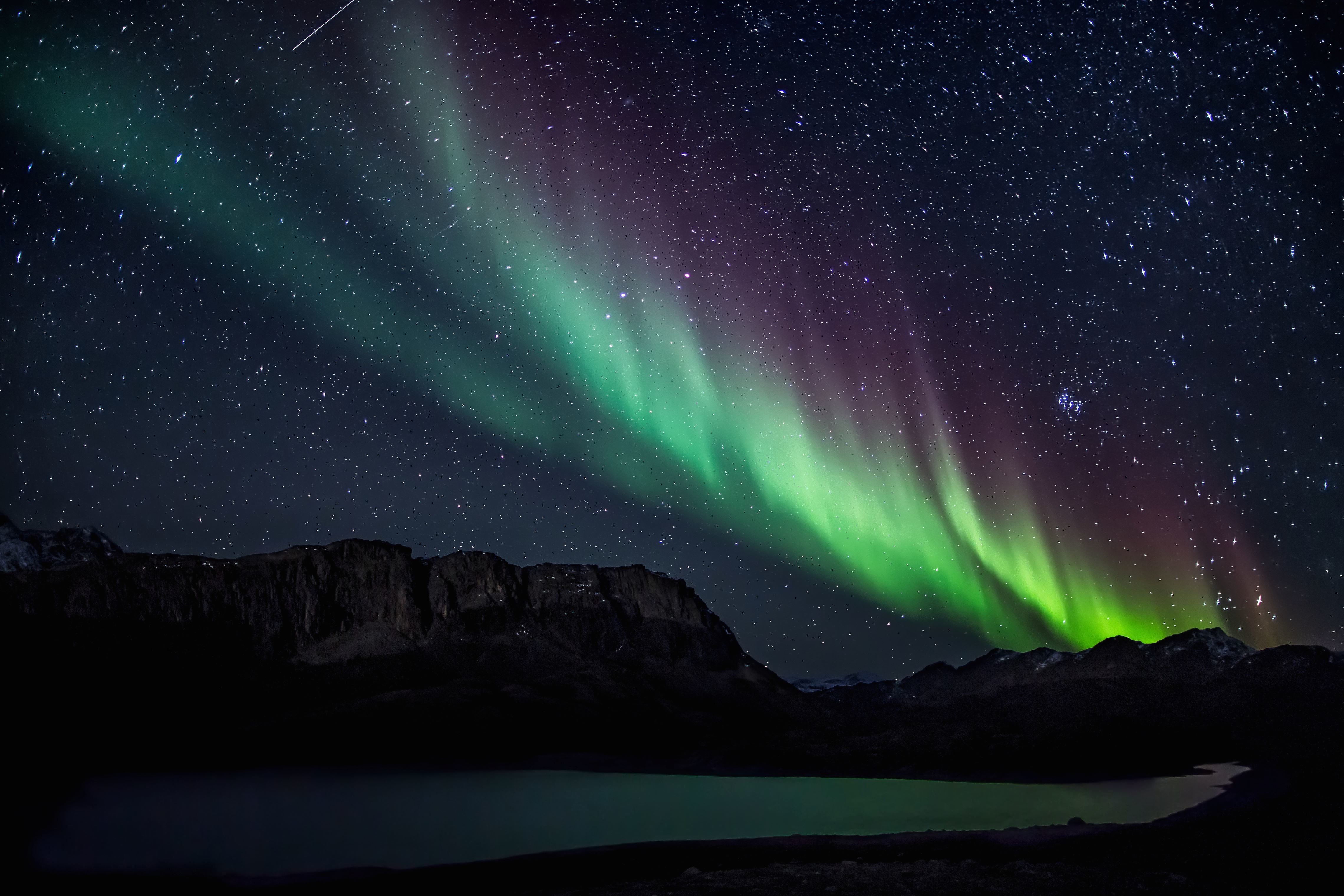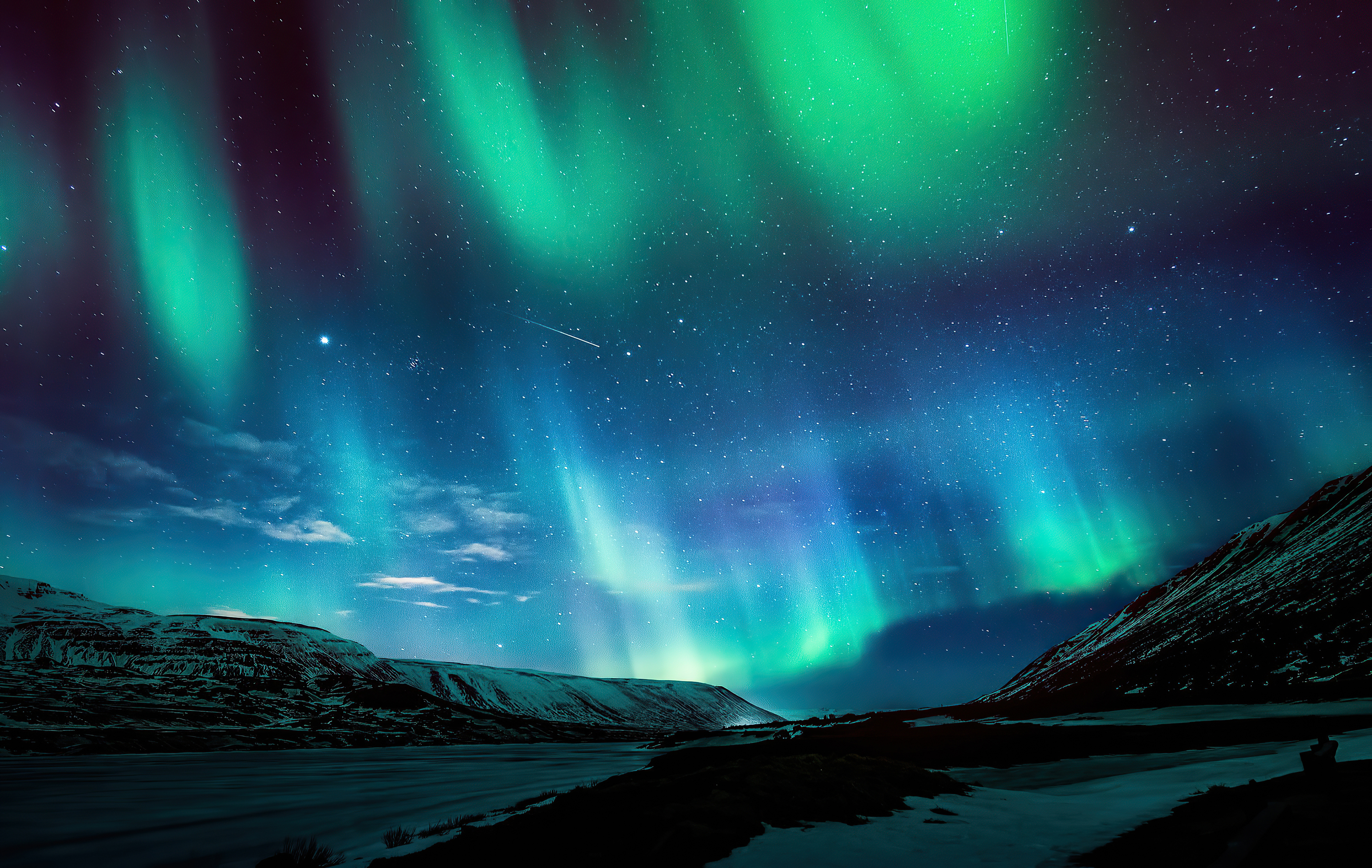There is something truly captivating about seeing the night sky put on a show, especially when it involves the shimmering lights of the aurora borealis. For many, this natural light display feels like a far-off dream, something you might only see in places way up north, like Alaska or the colder parts of Canada. Yet, every now and then, under just the right conditions, a whisper of this cosmic dance reaches as far south as California. It is, to be honest, a very uncommon occurrence, making those moments when it does happen feel incredibly special, almost like a secret shared between the sky and a lucky few observers.
The aurora, often called the Northern Lights, happens when energized particles from the sun hit our planet’s atmosphere. These particles, you know, interact with gases like oxygen and nitrogen, causing them to light up in various colors, typically green, but sometimes pink, red, or even purple. Usually, Earth's magnetic shield guides these particles toward the poles, which is why the best viewing spots are typically found near the Arctic Circle. So, to see it in a place like California, well, that needs a particularly strong solar event, something quite powerful indeed.
When the sun lets out a really big burst of energy, known as a geomagnetic storm, those charged particles get pushed with such force that they can sometimes reach lower latitudes than usual. This means that if you are in California and hoping to catch a glimpse, you are waiting for one of those truly extraordinary solar outbursts. It takes a lot of patience, actually, to wait for such a thing, much like how some folks wait for progress in a long-term strategy game, where the rewards come to those who stick with it for a long stretch. So, the chances are slim, but not entirely gone.
- Kieran Culkin Home Alone
- Jonbenet Ramsey House
- Alan Ritchson Wife
- College Student Missing In Punta Cana
- March 13 Zodiac
Table of Contents
- What Makes the Aurora Borealis Appear in California?
- When Does the Aurora Borealis California Happen?
- Finding the Aurora Borealis California - Where to Look?
- Is Seeing the Aurora Borealis California Just a Dream?
- How Can You Prepare for an Aurora Borealis California Sighting?
- What If I Miss the Aurora Borealis California?
- The Allure of the Aurora Borealis California
- Beyond the Aurora Borealis California - Other Celestial Wonders
What Makes the Aurora Borealis Appear in California?
Seeing the aurora borealis in California is, you know, a pretty rare event, and it all comes down to what the sun is doing. Our sun, a giant ball of gas, constantly sends out streams of charged particles. Most of the time, these streams are pretty mild. But every so often, the sun lets out a really big burp, a huge explosion of energy called a solar flare or a coronal mass ejection. When one of these big bursts happens and is aimed right at Earth, that is when things get interesting for those hoping to see the aurora borealis in California.
For the aurora to be visible at lower latitudes, like where California sits, the solar event needs to be quite strong, actually. We are talking about a powerful geomagnetic storm, one that can really shake up Earth's magnetic field. This field, sort of like a protective bubble around our planet, usually acts as a shield, pushing most of those solar particles away. But during a very strong storm, the field gets compressed and disturbed, allowing some of those particles to sneak in closer to the equator than they normally would. So, it is that direct, powerful hit from the sun that makes the difference, allowing the possibility of an aurora borealis California appearance.
The particles, once they get past our planet's magnetic defenses, then interact with the gases high up in our atmosphere. Different gases light up in different colors. Oxygen, for example, often glows green or reddish, while nitrogen can give off blue or purplish hues. For the aurora borealis to be seen from California, these light-producing interactions need to happen much further south than their usual polar hangouts. This means the solar storm has to be so intense that it pushes the auroral oval, which is the area where the lights typically appear, significantly closer to the equator. It truly takes a lot of energy to make that happen, and frankly, a bit of luck for it to align just right for a California viewing.
- Matlock Cast 2024
- Eminems Daughter
- Jack Paris Brinkley Cook
- Blair Waldorf Actress
- Yellowstone Season 5 Part 1
When Does the Aurora Borealis California Happen?
Pinpointing exactly when the aurora borealis might appear in California is, to be honest, a very tricky thing. It is not something you can schedule or predict with great certainty far in advance. The timing depends almost entirely on the sun's activity. The sun goes through what we call solar cycles, which are periods of about eleven years where its activity, like sunspots and solar flares, increases and decreases. During the peak of one of these cycles, the sun is much more active, and that is when the chances of strong geomagnetic storms, and thus a potential aurora borealis California display, go up quite a bit.
Even during a solar maximum, when the sun is at its most energetic, a direct hit powerful enough to cause an aurora in California is still uncommon. There have been a few instances over the years where conditions were just right, allowing folks in parts of California to witness a faint glow on the northern horizon. These events are often talked about for a while afterward, simply because they are so unusual. It is a matter of being in the right place at the right time, and having access to the right kind of information, you know, the kind that helps you track what the sun is up to. This public access to space weather data, in a way, is a lot like how a police department might provide regularly updated information to the public, offering a form of transparency about what is happening in their area, just on a much larger, cosmic scale.
Beyond the solar activity itself, the actual viewing time on Earth is also important. For any aurora borealis California sighting, you need truly dark skies. This means getting away from city lights, which can easily wash out the faint glow of a distant aurora. Clear weather is also a must, of course. Clouds will block your view completely. And because the aurora appears highest in the sky around midnight local time, that is typically the best window to look. So, even if a strong solar storm is happening, you still need those clear, dark, late-night conditions to even have a chance of spotting anything, which adds another layer of challenge to an already rare event.
Finding the Aurora Borealis California - Where to Look?
If you are hoping to catch a glimpse of the aurora borealis in California, your first and most important step is to get as far away from light pollution as you possibly can. Cities, with all their bright lights, create a glow in the night sky that makes it incredibly hard to see faint celestial phenomena. Think about it, you know, trying to see a tiny light when there are hundreds of bigger, brighter lights all around. So, heading out to truly dark sky locations is absolutely key. Places like the desert regions, or some of the more remote mountain areas, are often your best bet for finding that deep, dark canvas needed for a potential aurora borealis California show.
When you are picking a spot, look for somewhere with a very clear, unobstructed view to the north. Since California is so far south from the magnetic poles, any aurora you might see will appear very low on the northern horizon. You will want a wide-open vista, free from tall trees, buildings, or hills that could block your line of sight. This is why open desert landscapes or high mountain passes can be ideal. They offer that expansive view, allowing you to scan the entire northern sky for any sign of a subtle glow. It is, to be honest, a bit like searching for something small on a very big table; you need to see the whole surface.
Some specific areas in California that are known for their dark skies and could offer a chance include Death Valley National Park, Joshua Tree National Park, and certain parts of the Sierra Nevada mountains, especially away from populated areas. These spots are typically far from major cities, meaning less light interference. Even then, you are looking for a very faint display, possibly just a greenish or reddish arc along the horizon, not the vibrant, dancing curtains you might see in pictures from much further north. It is a different kind of show, a more subdued one, but still quite special for an aurora borealis California sighting.
Is Seeing the Aurora Borealis California Just a Dream?
For many people, the idea of seeing the aurora borealis in California feels, you know, like something out of a storybook, almost too good to be true. And honestly, it is an extremely rare occurrence. The conditions have to align in such a precise way – a powerful solar storm, clear skies, and a very dark viewing location – that it is easy to feel like it is just a dream. However, it is not entirely impossible. There have been documented cases, albeit few and far between, where the Northern Lights have indeed graced the California sky, even if only as a faint, distant glow on the horizon.
These past sightings, though uncommon, give hope to those who dream of witnessing this celestial event from the Golden State. It is important to set realistic expectations, though. The aurora borealis California experience is typically very different from what you might see in photos taken from, say, Norway or Iceland. Those images often capture bright, vivid colors and dynamic movements that are a result of being much closer to the heart of the auroral activity. In California, it is more likely to appear as a subtle, perhaps even colorless, arc or a general brightening of the northern sky, which your camera might actually pick up better than your eyes alone.
So, while it is not a common event, and you should not expect a spectacular show like those from higher latitudes, the possibility of an aurora borealis California appearance is real. It is a testament to the sheer power of the sun and the vastness of space that these particles can travel so far and still create a visible effect. Thinking about it, it is a bit like playing a strategy game where you have to wait for very specific, powerful events to happen to get a rare outcome. You might not always get the dramatic display, but even a faint glow can be a truly memorable experience, making the patience worthwhile.
How Can You Prepare for an Aurora Borealis California Sighting?
If you are serious about trying to spot the aurora borealis in California, the first thing you need to do is stay incredibly informed about what is happening with space weather. This means keeping an eye on forecasts for geomagnetic storms. There are, you know, specific websites and apps that track the Kp index, which is a measure of global geomagnetic activity. A Kp index of 7 or higher is generally needed for a chance to see the aurora at lower latitudes like California. So, regularly checking these sources for updated data and information is pretty much your best bet for knowing when to even bother looking up. It is like having access to a transparency portal for the cosmos, really, giving you a peek at what might be coming.
Beyond monitoring the Kp index, you also need to think about your viewing conditions. As mentioned, dark skies are absolutely essential. Check light pollution maps to find the darkest spots nearest to you in California. Also, keep an eye on the regular weather forecast. Clear skies are a must; even a little cloud cover can completely block your view. You are looking for a night with no clouds at all, especially towards the northern horizon. This combination of high solar activity and perfect terrestrial conditions is, you know, what makes an aurora borealis California sighting so challenging and, frankly, so special when it does happen.
If you do decide to head out, prepare as if you are going stargazing. Bring warm clothes, even if it is not that cold during the day, because night temperatures can drop significantly, especially in desert or mountain areas. A comfortable chair or blanket is good, too, since you might be waiting for a while. For photography, a camera that can take long exposures (like a DSLR or mirrorless camera) and a sturdy tripod are highly recommended. Your eyes might only see a faint glow, but a camera can often capture more color and detail during a long exposure, making the aurora borealis California experience even more rewarding for those who document it.
What If I Miss the Aurora Borealis California?
Let us be honest, the chances of missing an aurora borealis California display are, you know, pretty high. It is an extremely rare event, and even when the conditions are right, the display might be too faint or too short-lived to catch. If you do miss it, or if it simply does not happen during your watchful waiting, there is no need to feel bad about it. It is like trying to catch a specific, very quick update in a fast-moving online community; sometimes, despite your best efforts


